Using Altair
Altair is an application for running GraphQL queries/mutations. With it, you can build and check the results of requests on the web before integrating them into your code.O Altair é uma aplicação para
The most important step to use Altair is to access this link: https://altair.autentique.com.br (We made a few small changes to the standard Altair client to make your life easier, like custom collections with the main actions of Autentique).
Request Headers
When you open the link, the first screen you will see is the Headers screen.
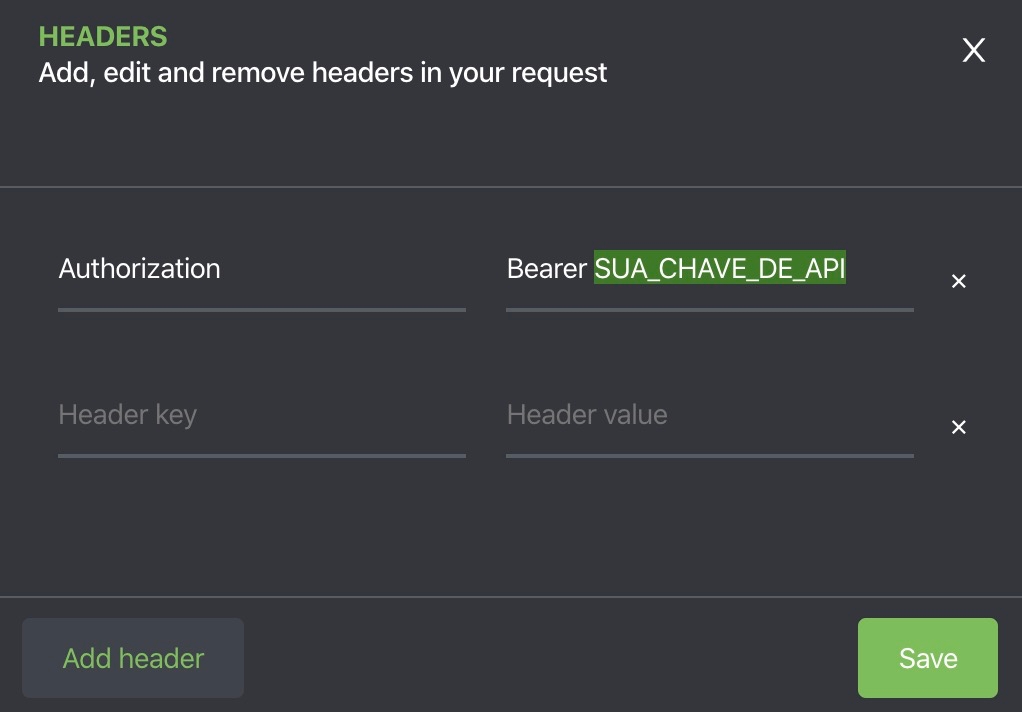
As you might have already guessed, these are the headers you need to include when making a request to the API, and the SUA_CHAVE_DE_API should be replaced with your actual API key (yes, this has happened before).
If you want to change your key, you can access this screen again under Set Headers.
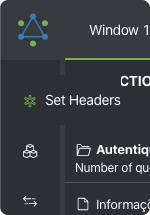
Development Environments
The development environments contain variables with different values depending on the active environment:

There are two interesting things in this image. The first is the {{endpointURL}}, which is the variable defined by the second interesting thing: the development environment, "Production," in the top right corner.
In the same menu, there's the "Environments..." option, which contains the definition of these variables:
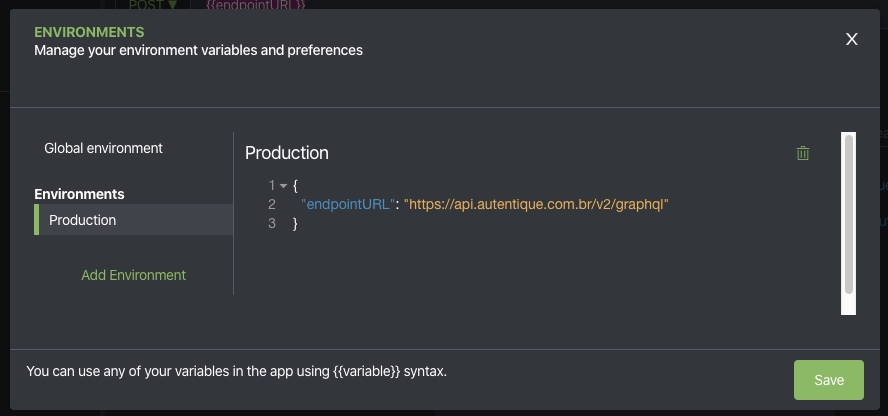
Collections
We created some collections with the main actions/queries used in Autentique. You can check, test, or use them in your project — or use them as a reference to create your own queries.
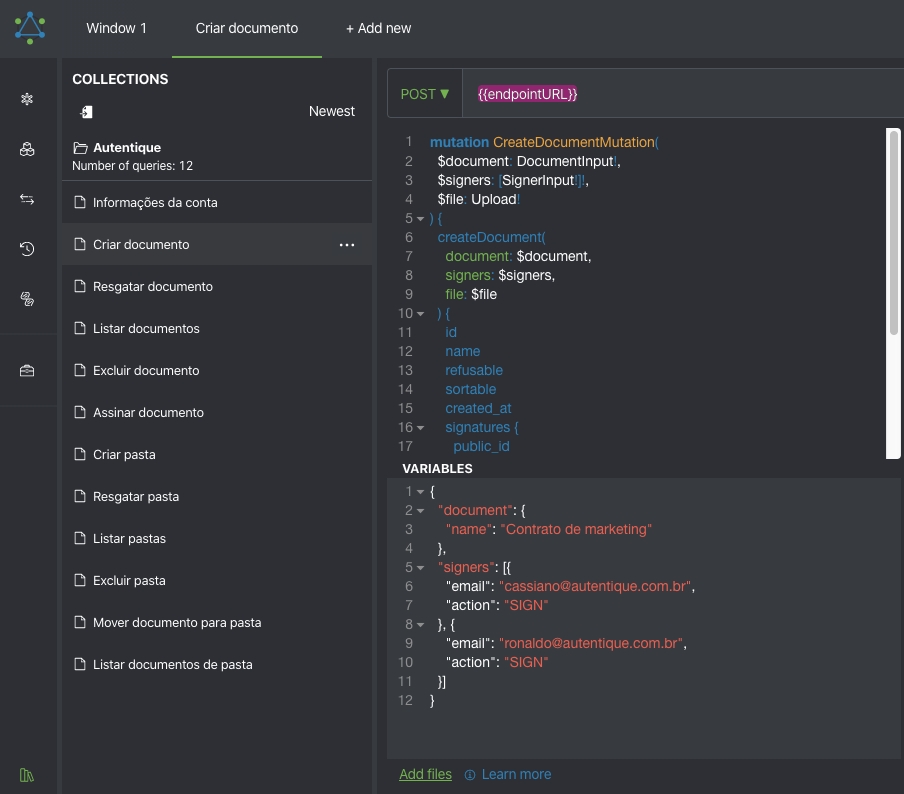
The collections are just examples, so they don’t represent everything you can do with the API. Some require you to fill in parameters like document IDs, folder IDs, etc., to work properly.
Collections might not work on Firefox when using private mode.
Documentation
Besides the collections, there's a more complete built-in documentation that shows everything you can do with the API.
Click Docs at the top of the screen to open the sidebar with the documentation. If it appears empty, click Reload Docs to refresh it. Still not working? Check the Headers tab to make sure you’ve added your API key, then try again.
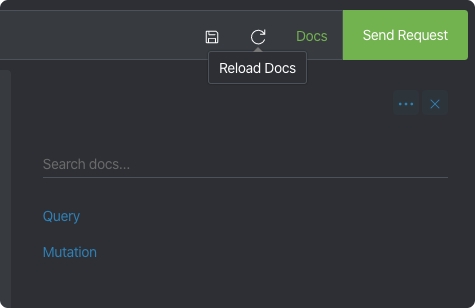
The first items are Query (functions that only fetch information) and Mutation (functions that perform actions or make changes). When you click on one of them, you’ll see what the API can currently do — including all available functions and the data you can query.
Next, we’ll show some of these queries/mutations and how to run them in Altair.
Last updated
Was this helpful?